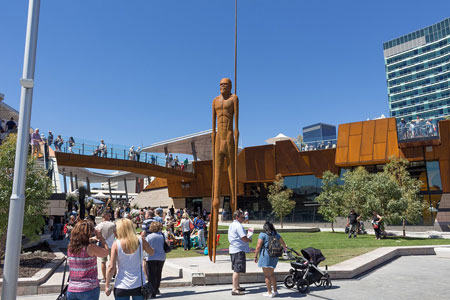Perth Translation Services » Energy Mining Translation » Tagalog Translator
Energy Mining Tagalog Translation
Whether you are extracting oil and gas, liquid or solid minerals, we have English <> Tagalog translators with the background knowledge of your operating procedures and industry specific terminology.
Our belief in quality energy and mining Tagalog translations means our translators make full effort to investigate the best Tagalog translation for the document context and build upon past knowledge and experience from our existing clients.
Examples of documents we provide for the energy mining sector include:
- Drilling programmes and expedition reports
- Employment Agreement
- Field development economics and budgeting documents
- Geophysical and geotechnical logs
- Health and Safety Documents
- Legal Agreements
- Operation and maintenance manuals
- Pipeline Inspection Reports
- Safety Signage and Guidelines
- Seismic data acquisition documents
- Technical and CAD drawings
- Tender Documentation
- Video and audio
- Well legislation, procedures and reports
Enquire with us today with your project requirement.
Upload your documents for translation
Professional Tagalog Translator

Perth Translation provides professional Tagalog <> English translation services. You can use the form on this page to upload multiple files for a confirm quote and delivery time. Our Tagalog translator is ready to assist with your translation project.

Energy Mining Subject Translations For All Major Languages
- Arabic energy mining translation
- Chinese energy mining translation
- Catalan energy mining translation
- Croatian energy mining translation
- Czech energy mining translation
- Estonian energy mining translation
- Dutch energy mining translation
- Finnish energy mining translation
- French energy mining translation
- German energy mining translation
- Greek energy mining translation
- Hindi energy mining translation
- Hungarian energy mining translation
- Indonesian energy mining translation
- Italian energy mining translation
- Japanese energy mining translation
- Korean energy mining translation
- Macedonian energy mining translation
- Malay energy mining translation
- Norwegian energy mining translation
- Persian energy mining translation
- Polish energy mining translation
- Portuguese energy mining translation
- Punjabi energy mining translation
- Romanian energy mining translation
- Russian energy mining translation
- Serbian energy mining translation
- Slovak energy mining translation
- Spanish energy mining translation
- Swedish energy mining translation
- Tagalog energy mining translation
- Thai energy mining translation
- Turkish energy mining translation
- Ukrainian energy mining translation
- Urdu energy mining translation
- Vietnamese energy mining translation
About the Tagalog Language
Tagalog is one of the main languages spoken in the Philippines. More than twenty-two million people speak it as their first language. It originally was spoken by the Tagalog people of the Philippines, who were mainly in Bulacan, Cavite, and some parts of the island of Luzon.
Tagalog is now spoken nationwide like English in the Philippines. It is a mix of Spanish, Malay, and English. It originally was used with an abugida, the Baybayin script, but now the Latin alphabet is used to write the words.
The word Tagalog is derived from the endonym taga-ilog ("river dweller"), composed of tagá- ("native of" or "from") and ilog ("river"). Linguists such as Dr. David Zorc and Dr. Robert Blust speculate that the Tagalogs and other Central Philippine ethno-linguistic groups originated in Northeastern Mindanao or the Eastern Visayas.
Possible words of Old Tagalog origin are attested in the Laguna Copperplate Inscription from the tenth century, which is largely written in Old Malay. The first known complete book to be written in Tagalog is the Doctrina Christiana (Christian Doctrine), printed in 1593. The Doctrina was written in Spanish and two transcriptions of Tagalog; one in the ancient, then-current Baybayin script and the other in an early Spanish attempt at a Latin orthography for the language.
Throughout the 333 years of Spanish rule, various grammars and dictionaries were written by Spanish clergymen. In 1610, the Dominican priest Francisco Blancas de San Jose published the “Arte y reglas de la Lengua Tagala” (which was subsequently revised with two editions in 1752 and 1832) in Bataan. In 1613, the Franciscan priest Pedro de San Buenaventura published the first Tagalog dictionary, his "Vocabulario de la Lengua Tagala" in Pila, Laguna.
The first substantial dictionary of the Tagalog language was written by the Czech Jesuit missionary Pablo Clain in the beginning of the 18th century. Clain spoke Tagalog and used it actively in several of his books. He prepared the dictionary, which he later passed over to Francisco Jansens and José Hernandez. Further compilation of his substantial work was prepared by P. Juan de Noceda and P. Pedro de Sanlucar and published as Vocabulario de la Lengua Tagala in Manila in 1754 and then repeatedly reedited, with the last edition being in 2013 in Manila.

